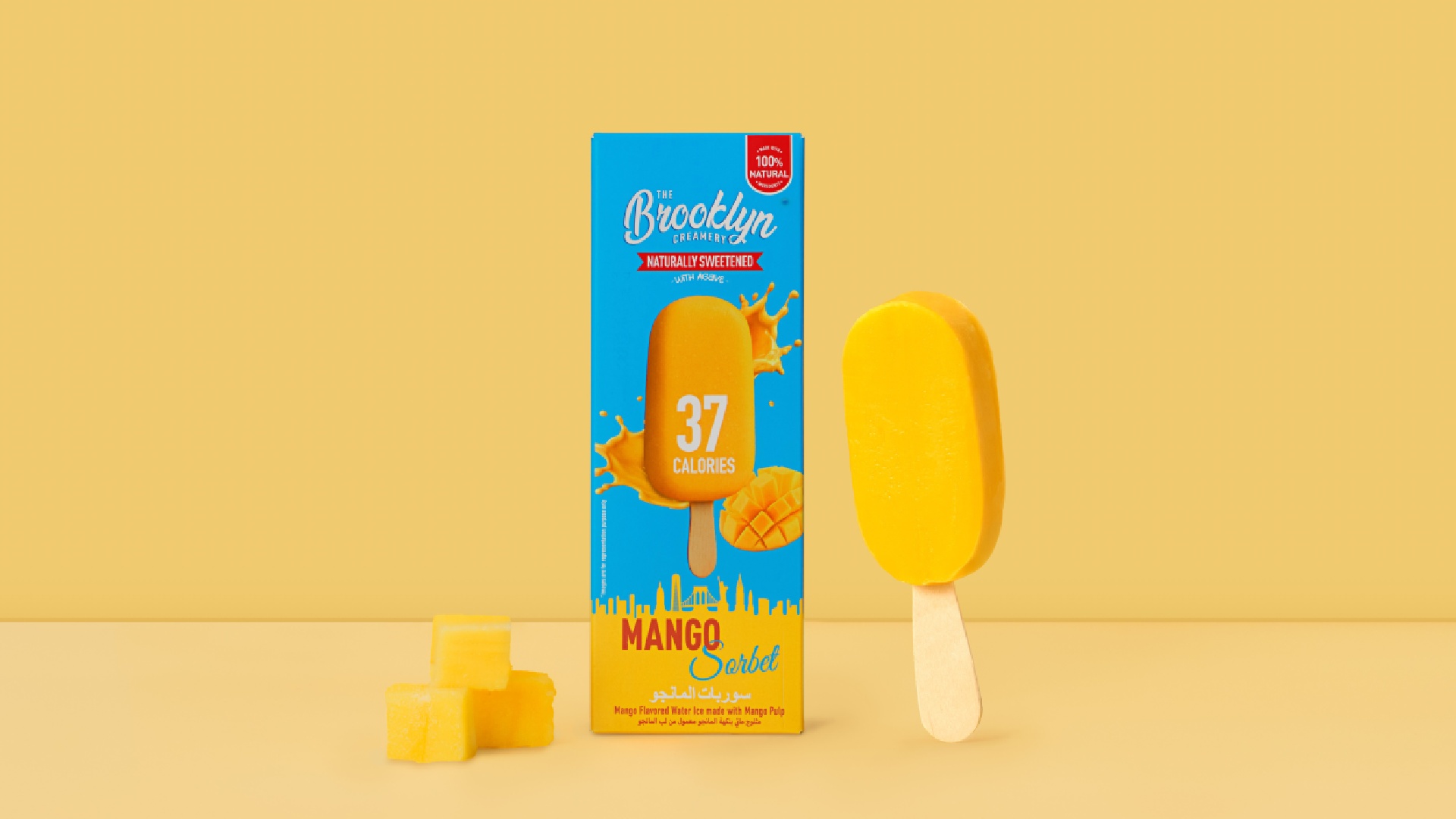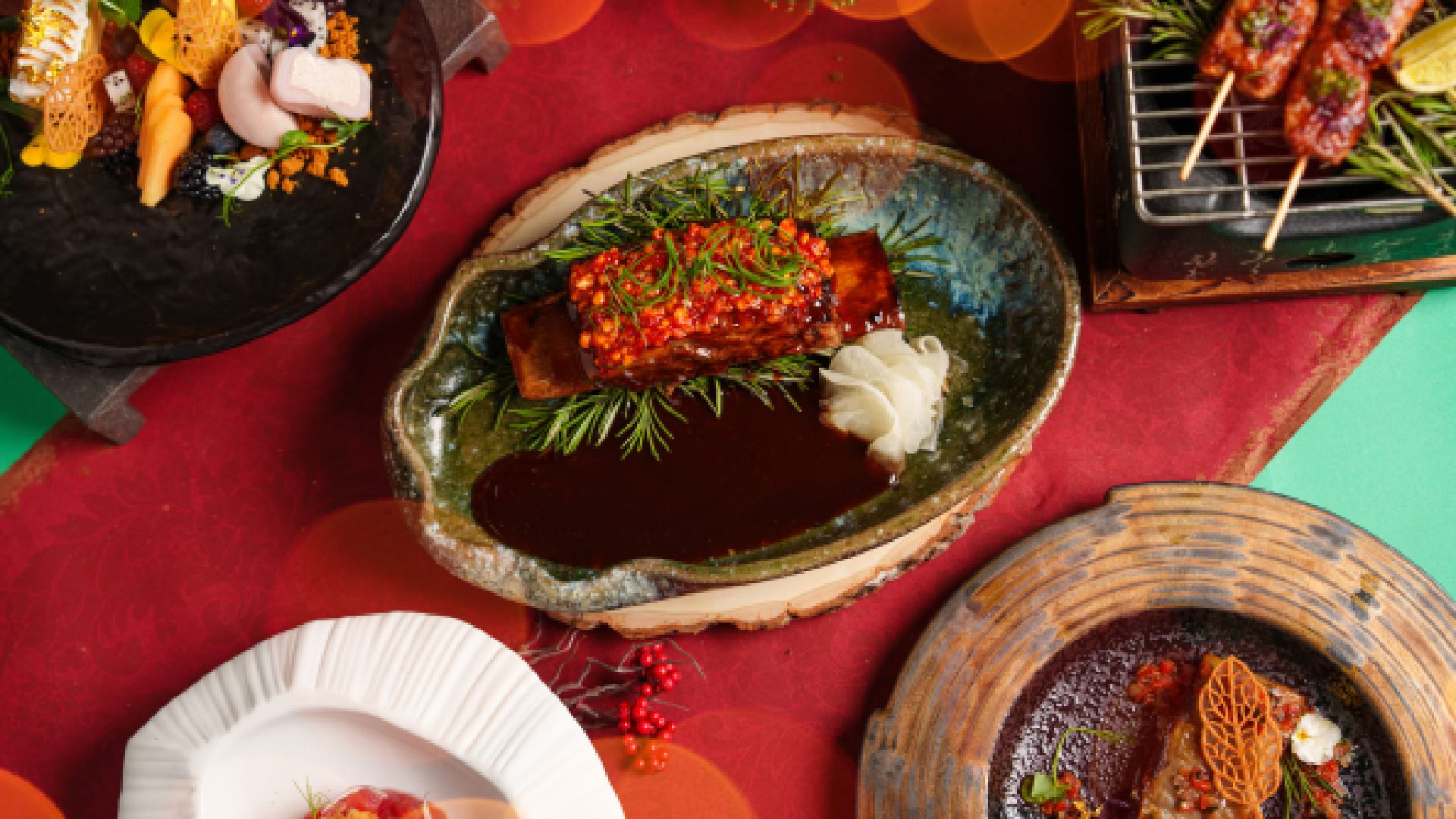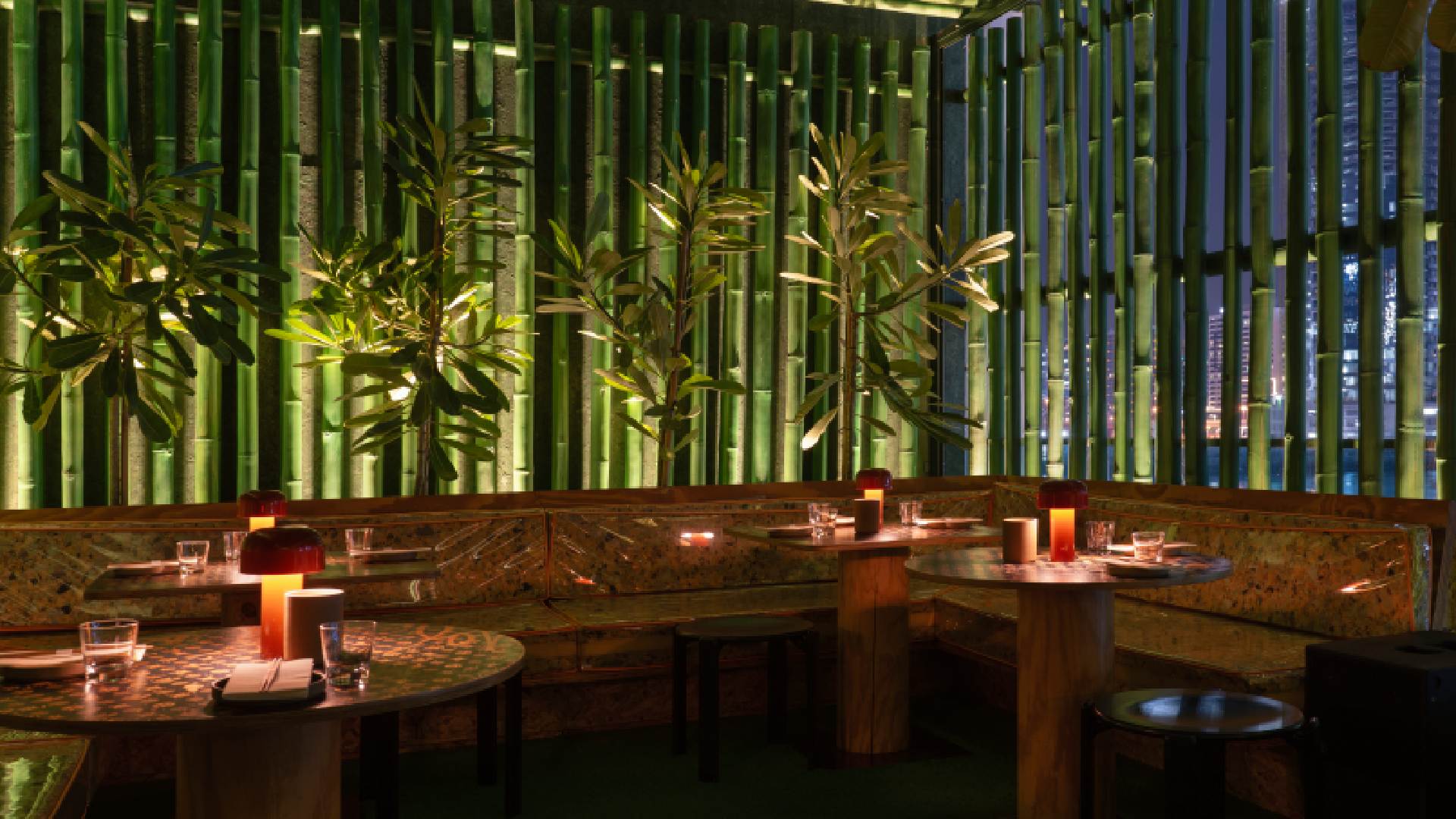Hospitality
MillerKnoll’s Sustainable Approach to Hospitality Design

Integrator Media had an exclusive interview with Stacy Stewart, MEA Regional Director at MillerKnoll
Could you please provide an overview of MillerKnoll?
MillerKnoll is a collective of dynamic brands powering the world’s most renowned design brands, MillerKnoll includes Herman Miller and Knoll, plus Colebrook Bosson Saunders, Geiger, HAY, Maharam, Muuto and NaughtOne. Each brand offers a distinct perspective on design and a full portfolio of products to suit diverse needs.
Could you elaborate on how the company’s vision and sustainability goals aligns with consumer expectations in the hospitality sector?
The hospitality sector has always been important to us in terms of meeting consumer expectations. Purpose-driven design remains central to our vision. We create environments that focus on positive human impact beyond just products. Our commitment to bettering lives through design is our cornerstone, and we strive to create spaces where people want to be.
Additionally, as MillerKnoll, we have set ambitious sustainability goals, including reducing our carbon footprint, sourcing better materials, and eliminating waste from our processes, such as single-use plastic packaging and landfill waste. This exemplifies our holistic view of design’s role in creating a greener future for people and our planet. In the hospitality sector, this is especially relevant, as the wellbeing of both visitors and staff is important.
How important is it to MillerKnoll that the brands in the collective produce longevity products?
For us, it’s important that the brands prioritise sustainability and ethical practices to ensure the longevity in their products. A product that lasts longer significantly reduces landfill waste. For example, Herman Miller tests the durability and longevity of their products before adding them to their assortment. You’ll find bags dropped into the seat of a chair, casters spun for days on end, and machines that wouldn’t feel out of place in a repair shop, because we want them to stand the test of time. Many of our brands also offer industry leading warranty terms, for example, Herman Miller offers 12 years, as we recognise your need for products that can stand up to continuous use.
Can you provide an example of a brands’ approach to sourcing materials?
Knoll ensures responsible sourcing of materials, including marble from European quarries close to the manufacturing plants, which reduces transportation needs and ensures fair wages for producers. The iconic Saarinen Table which is manufactured in Graffignana, Italy, is sourced from quarries in Slovenia and Italy, exemplifying this approach.
Another example is HAY, a brand in the collective that focuses on developing long-lasting products that minimise environmental impact using sustainable materials such as recycled materials, FSC-certified wood, and water-based lacquer. Their growing collection of eco-certified products demonstrates the brand’s dedication to sustainability.
Also, NaughtOne’s Ever Chair and Sofa Collection, use materials that are 100% recyclable, and after your use, whether that is 20, 40 or even 100 years – it can be broken down and recycled by hand with common tools. And you don’t need to worry about this part, the sofa can simply be returned to NaughtOne via the company’s take-back programme. NaughtOne will then handle the rest, making sure each of the sofa’s materials make it to the right place.
How does MillerKnoll balance aesthetic value and functionality in the hospitality sector?
Hospitality comes in many forms, but at its essence, hospitality is a relational, place-based activity that seeks to meet people’s basic needs. A hospitality space, especially the entrance, sets the tone for the type of experience guests will have. It’s important to create areas that are welcoming and easy to navigate, where people feel safe. We design spaces to communicate our commitment to providing an elevated experience for everyone who enters the space, both aesthetically and functionally.
What specific needs does MillerKnoll address within the hospitality sector?
Hospitality goes beyond food and drink to deliver a safe, inclusive and welcoming environment. Our three design considerations are Protection, Intellectual Welcome and Communal Hub, centered around the journey for individuals and groups. Top of Form
Hospitality
THE BROOKLYN CREAMERY LAUNCHES ITS FIRST SORBET BAR WITH JUST 37 CALORIES – MEET THE MANGO SORBET

Who says you can’t enjoy the taste of peak-season mango in the middle of winter? The Brooklyn Creamery, the UAE’s premier better-for-you ice cream brand, makes it possible with its newest innovation: the Mango Sorbet Bar.
A bright and refreshing celebration of mango, the 37-calorie Mango Sorbet Bar is crafted for health-conscious dessert lovers, mango enthusiasts, and anyone seeking a little sunshine in their day. Made with just five ingredients, the bar delivers indulgent fruity flavour without compromise.
“We wanted to bring the natural, juicy goodness of real mango to our fans all year round,” says Shivaan Ghai, Founder of The Brooklyn Creamery. “With just 37 calories, the Mango Sorbet Bar delivers bright, authentic fruit flavour in a clean, low-calorie format — without compromising on ingredients or quality.
The Mango Sorbet Bar is 100% natural, free from artificial colours, flavours, and preservatives. Its smooth, vibrant taste mirrors the luscious sweetness of real mango, transforming a simple sorbet into a moment of tropical escape. Perfect as a post-workout treat, afternoon pick-me-up, or light dessert, it proves that indulgence can be refreshing, simple, and better for you.
The new Mango Sorbet bar is available across the UAE for AED 9 per 55ml bar, via Deliveroo, Talabat, Noon Food, and Careem.
With this launch, The Brooklyn Creamery continues to redefine indulgence, offering flavors that surprise, delight, and deliver a creamy, satisfying experience.
Hospitality
CELEBRATE THE MAGIC OF CHRISTMAS WITH SKYLINE VIEWS AND EXQUISITE DINING AT OANJO

This festive season, celebrate Christmas with a touch of sophistication and sky-high style at OAnjo, Dubai’s elegant rooftop restaurant where Japanese culinary artistry meets the vibrant spirit of Peruvian flavours. With panoramic skyline views and a specially curated three-course festive menu, OAnjo invites guests to experience the true spirit of Christmas — refined, joyful, and unforgettable.
Guests are invited to indulge in a three-course festive menu, thoughtfully curated to showcase the elegance and balance of modern Japanese cuisine with the warmth and zest of Peru. From delicate sushi creations to exquisitely grilled dishes, each course reflects OAnjo’s signature precision and flair — an ode to Japan’s culinary philosophy of harmony, simplicity, and flavour.
Guests can choose from two festive packages designed to suit every celebration:
With panoramic views of Dubai’s glittering skyline, OAnjo provides the perfect backdrop for festive gatherings, intimate dinners, and joyful moments shared under the stars. Guests can toast to the holidays while savouring exceptional dishes and soaking in the restaurant’s stylish, serene ambiance.
Book your table today and make this Christmas one to remember — where good food, great company, and breathtaking views come together in perfect harmony.
Event Details
OAnjo Restaurant, Sheraton Mall of the Emirates, Dubai
Christmas Eve Dinner Celebration — December 24
Hospitality
DECEMBER’S MUST-SEE MUSIC NIGHTS AT HONEYCOMB HI-FI

Honeycomb Hi-Fi is turning December into a month-long celebration of international sound. The venue has announced a trio of standout DJ nights, each spotlighting deep grooves, eclectic vibes and artists who really know what they’re doing.
The series opens on Friday, 5 December, with WASS & NESTA. Known for their dynamic, rhythm-driven sets and the ability to read the room, the duo is set to ignite the dancefloor, turning the night into a serious dialogue between DJs and the crowd.
On Thursday, 11 December, the spotlight turns to a Jazz Kissa-inspired evening featuring Dan Greenpeace, Frezidante and Amir. Each brings a distinctly different musical lens, resulting in a flowy blend of jazz influences, broken beats and soulful house.
Rounding out the month is “Italian Job” on Friday, 19 December, led by LTJ and Tommy Outside. The pair will deliver a tribute to Italy’s influential electronic music with warm textures, timeless grooves and the kind of sophisticated selections that have made Italian DJs beloved around the world.
Throughout all three nights, guests can enjoy Honeycomb Hi-Fi’s Japanese-inspired menu along with its standout drinks. Music starts from 9 pm onwards, and there’s an entry fee of AED 120, which includes a complimentary drink token, while table reservations require a minimum spend of AED 350 per person from 9:30 pm.
For those unable to join the international nights, Honeycomb Hi-Fi will still be buzzing throughout the month with its local programming. Upcoming December highlights include PEPELZ on Monday, 15 December, a MONILE guest shift with Raiza Carrera on Wednesday, 17 December, and an NYE takeover with N-You-Up on Wednesday, 31 December.
-

 Tech News1 year ago
Tech News1 year agoDenodo Bolsters Executive Team by Hiring Christophe Culine as its Chief Revenue Officer
-

 VAR8 months ago
VAR8 months agoMicrosoft Launches New Surface Copilot+ PCs for Business
-

 Tech Interviews2 years ago
Tech Interviews2 years agoNavigating the Cybersecurity Landscape in Hybrid Work Environments
-

 Tech News5 months ago
Tech News5 months agoNothing Launches flagship Nothing Phone (3) and Headphone (1) in theme with the Iconic Museum of the Future in Dubai
-

 Tech News2 years ago
Tech News2 years agoBrighton College Abu Dhabi and Brighton College Al Ain Donate 954 IT Devices in Support of ‘Donate Your Own Device’ Campaign
-

 Editorial1 year ago
Editorial1 year agoCelebrating UAE National Day: A Legacy of Leadership and Technological Innovation
-

 VAR1 year ago
VAR1 year agoSamsung Galaxy Z Fold6 vs Google Pixel 9 Pro Fold: Clash Of The Folding Phenoms
-

 Cover Story9 months ago
Cover Story9 months agoUnifonic Leading the Future of AI-Driven Customer Engagement













